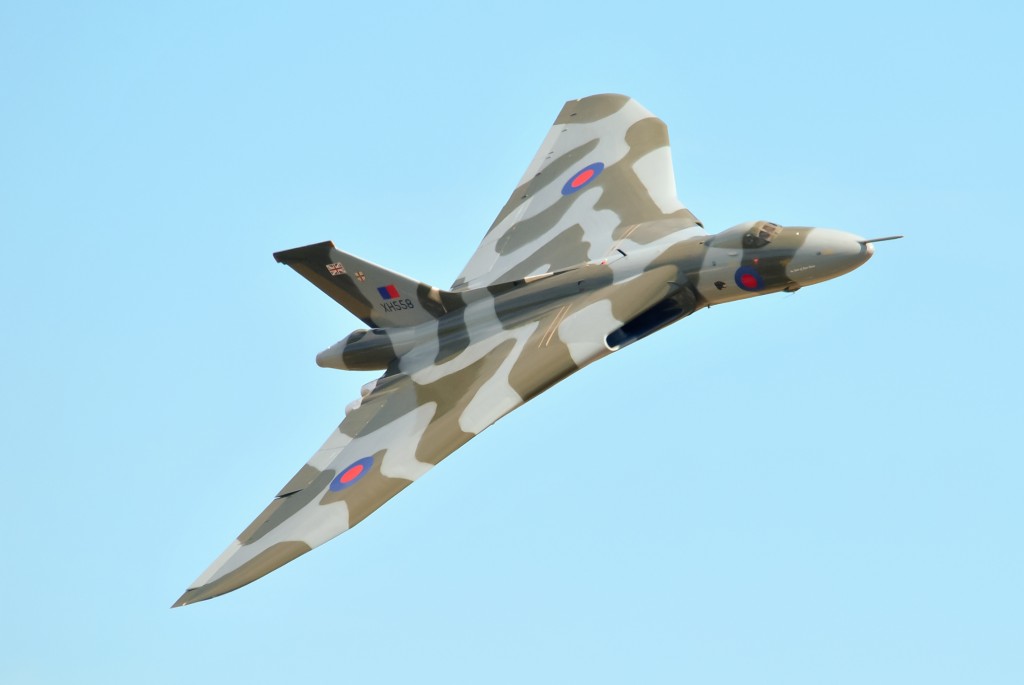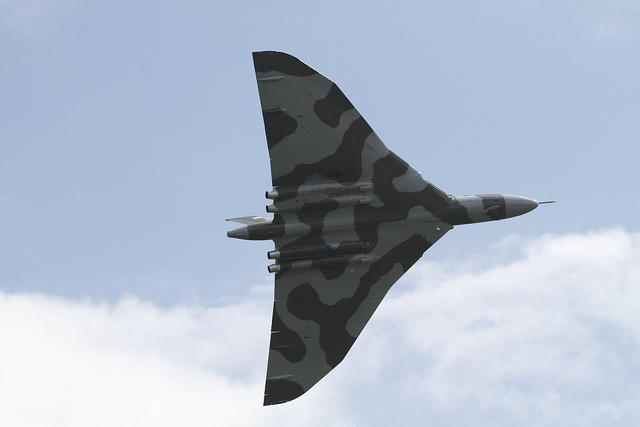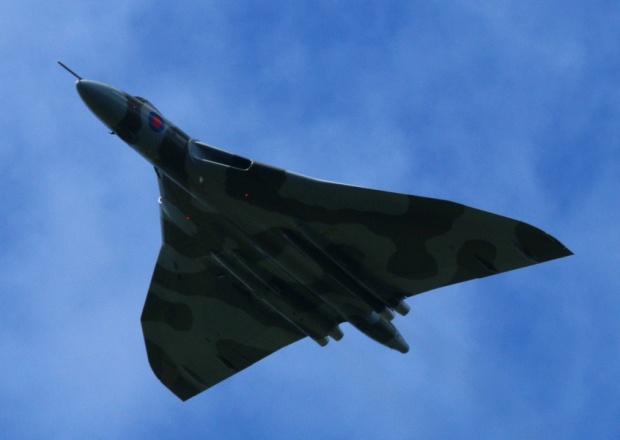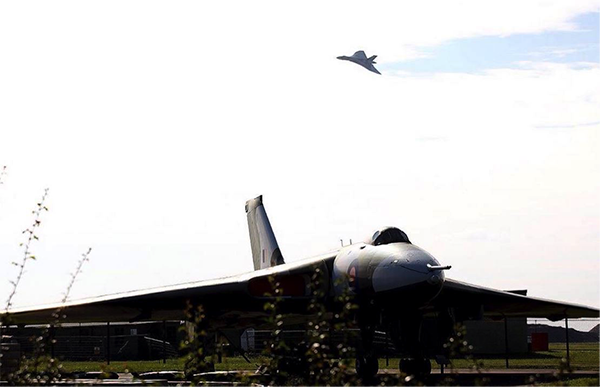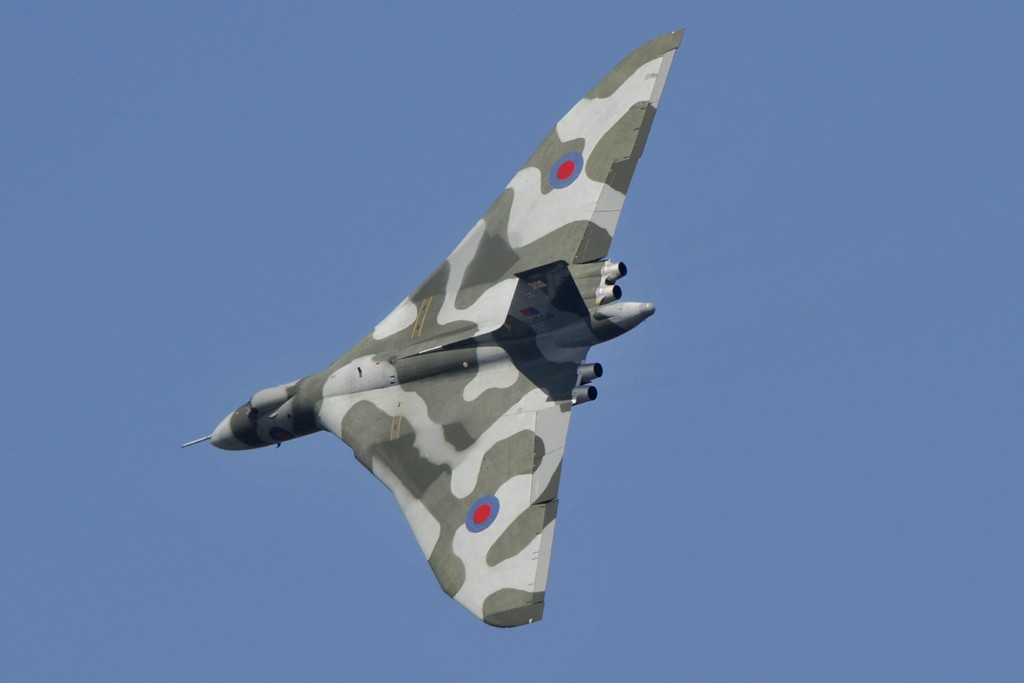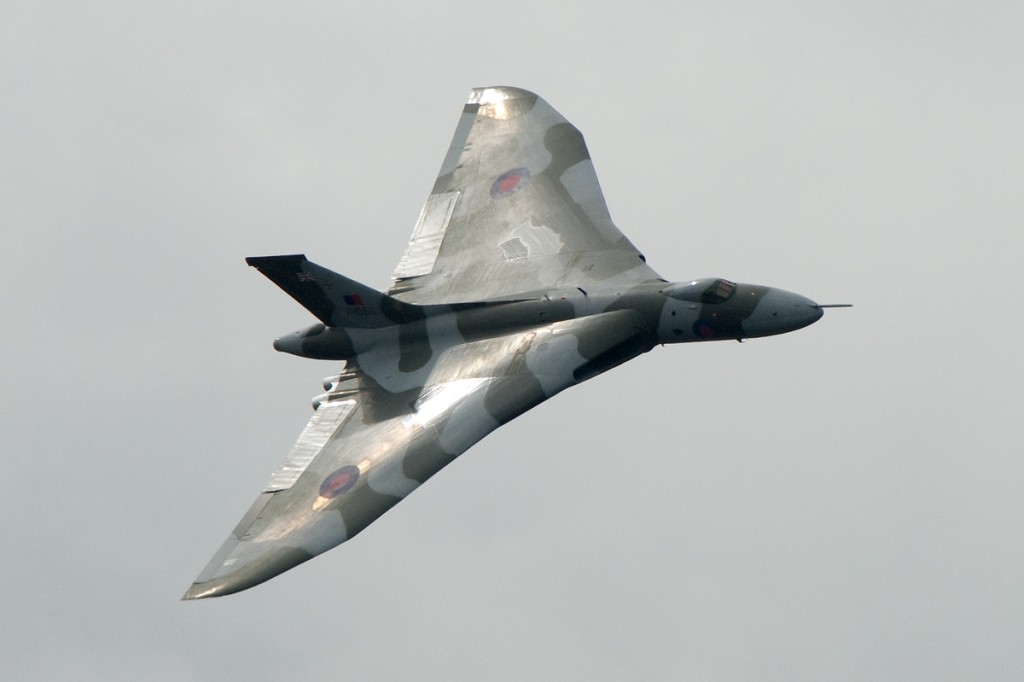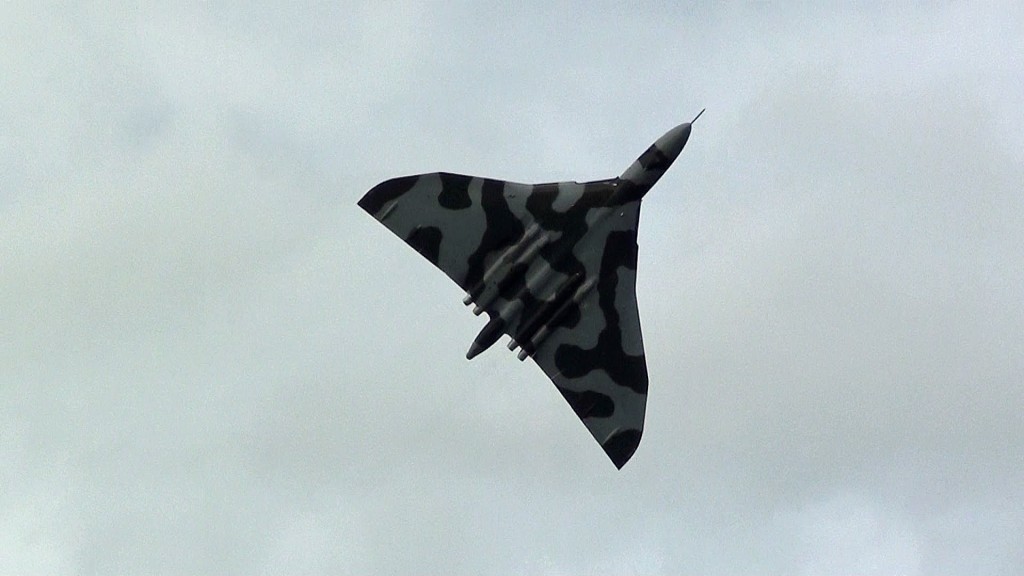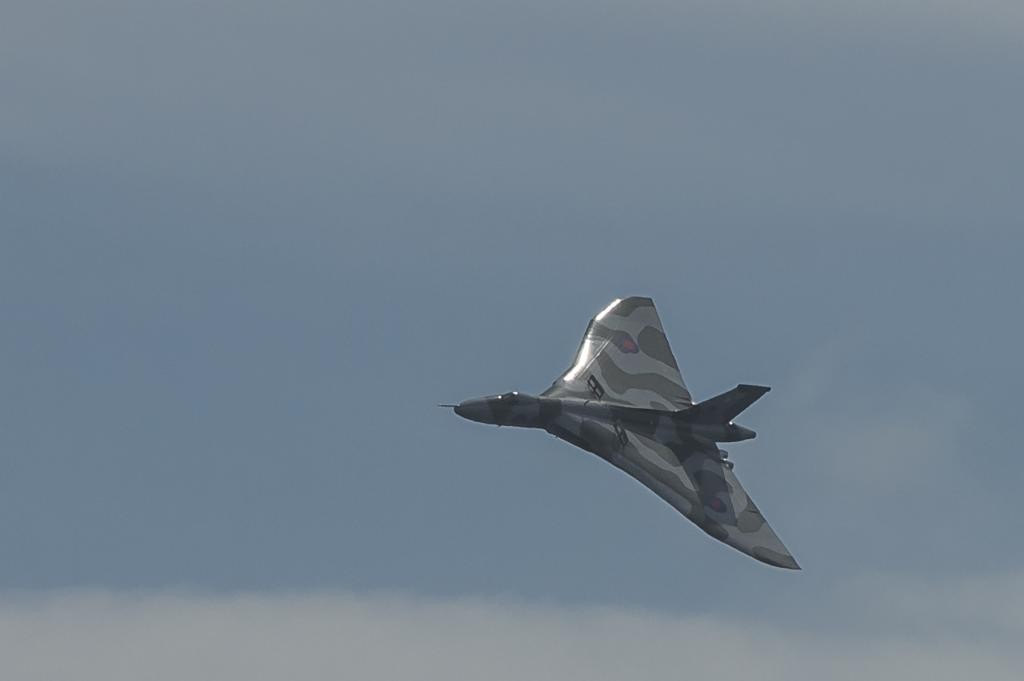There really is no other aeroplane quite like the Avro Vulcan. Majestic, huge, loud, yet graceful, agile and just plain classy. Her beautiful, distinctive delta shape has graced our skies once more for the last eight years since her restoration to flight status, due both to the incredibly hard work and dedication of the owners of the last flying example of the type, and to the enthusiasm and doggedness of hundreds of thousands of ordinary people all across the UK who have supported her financially. In so many ways, she is indeed the ‘People’s Aeroplane’.
Sadly, I am writing this piece in the few days before our beautiful Vulcan takes her last ever flight. XH558, the world’s last flying Vulcan, is right at the end of her last season of flight – she cannot fly after this season because her technical support companies will be withdrawing their help. This is, amongst other reasons, because XH558 has now flown 10% more hours than any other Vulcan has ever flown, and she is now in uncharted territory, technically speaking. System failures are therefore very hard to anticipate, and it is of course extremely important for safety reasons to be able to perform preventive maintenance on any aircraft. But because of the ‘unknown’ element, this maintenance is becoming almost impossible to guarantee. Click here to go to the Vulcan company’s website for more details on this decision.
I think it’s fair to say that the Vulcan is the most popular aeroplane that has flown in recent British airshows. She draws crowds like nothing else. Even if there’s another aircraft performing its display, if the Vulcan is due soon, people are constantly on the lookout for her appearance in the distance. When someone spots her distinctive silhouette as she waits her turn a few miles from the display, the news spreads like wildfire and all heads turn to look where people are pointing. She has this effect like no other aircraft, and it’s what’s known as the ‘Vulcan Effect’.
Here’s XH558 arriving at Dawlish Airshow in Devon on August 22nd, 2015. We were there, and we thought this would be the last time we would ever see her flying – fortunately, though, we saw her again a week later when she made a late change of plans and decided to visit Dartmouth Regatta too.
The characteristic and awesome Vulcan Howl is apparent on that clip. It is so loud on that clip that it is distorted by the microphone, but at least it does succeed in drowning out the noise of nearby kids 😉 It’s caused by a resonance in the the air intake geometry, shifting a hundred kilograms of air per second into the engines, and it only occurs between about 87% and 95% power. So you tend to hear it more when the engines are spooling up to near full power, and it tends to be most easily heard if you’re standing somewhere more or less in front of the aeroplane.
Here’s a great YouTube video of Vulcan XH558’s Dawlish display:
The Vulcan bomber was originally designed as part of the ‘V-Bomber’ force, part of Britain’s nuclear deterrent during the Cold War. However, she was only used in action in one theatre of operations – during the Falklands War of 1982, when she flew the ‘Black Buck’ missions to deliver conventional high-explosive bombs to disable the runway at Port Stanley, to deny its use by Argentinian aircraft, and other strike missions against Argentinian ground forces such as search radar installations.
In the picture below, XH558 is visible flying a final ‘salute’ flight over Vulcan XM607 at RAF Waddington towards the end of the 2015 season, where ‘607 is the ‘gate guardian’. XM607 is the aircraft that flew the first of the Black Buck missions on 1st May 1982 under the command of Flt. Lt. Martin Withers, now XH558’s Chief Pilot.
Here’s a short clip (this one taken by me) of this magnificent aeroplane as she climbs away directly over our heads at Dawlish. The Howl happens just before the end of the clip:
More pictures of the Mighty Vulcan:
It’s almost unbelievable seeing a four-engined, 111ft wingspan aeroplane doing the things that the Vulcan does. The display pilots throw her around the sky, often going to inverted bank angles; her performance looks more like a fighter than a heavy bomber. In fact, the Vulcan even has a fighter-style control stick (a ‘joystick’) whereas most heavy aircraft have more of a ‘yoke’ arrangement, which is a bit like a steering wheel. Clearly Roy Chadwick, the lead designer of the Vulcan (and the chap who designed the famous Lancaster) knew what a ‘hot ship’ the Vulcan would be, and included the joystick controls to encourage the pilots to ‘maneuver’ the aircraft a bit…..
I remember in the ’70s and ’80s, watching four of these beauties scrambling (fast take-off) one after the other down the runway at both RAF Waddington and RAF Finningley (where ‘558 now lives). They were demonstrating a QRA (Quick Reaction Alert) scramble where they all get off the ground in under two or three minutes. Imagine it. Four Vulcans taking off in a row, followed by a full-power climb-out directly over the crowd, howls and all. Is it any wonder I love this aeroplane?
It’s going to be a sad day for me when they announce that Vulcan XH558 has made her last ever flight. But to quote Dr. Seuss,
‘Don’t cry because it’s over, smile because it happened’
I think for me it will be a bit of each…..
[Edit: XH558 completed her final flight on 28th October, 2015. Farewell, dear old lady, we will miss you. Click here for a report on the fight]

